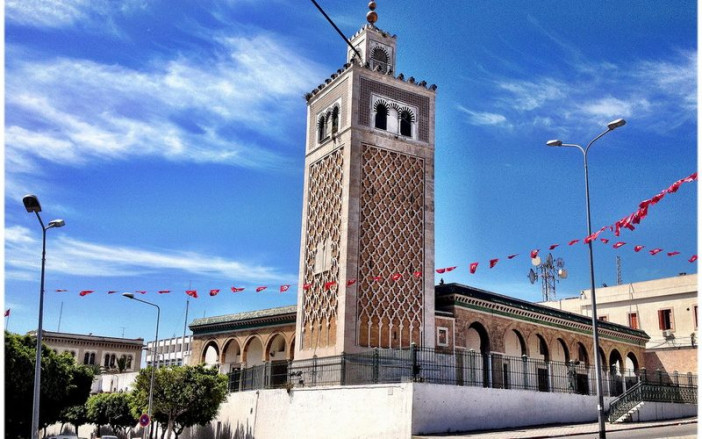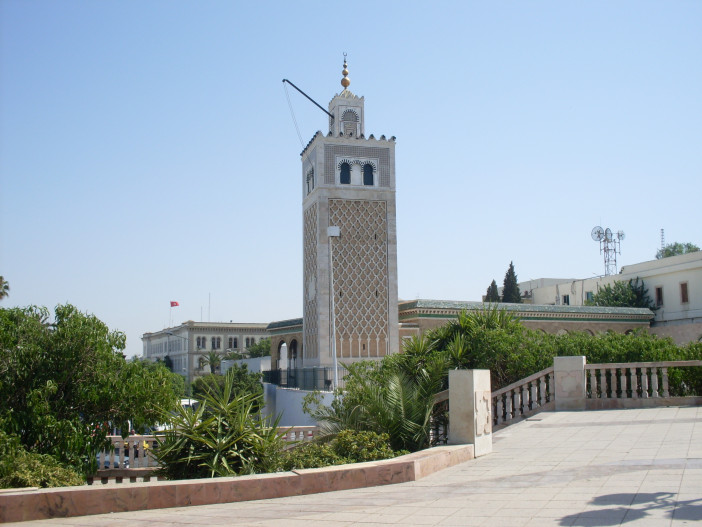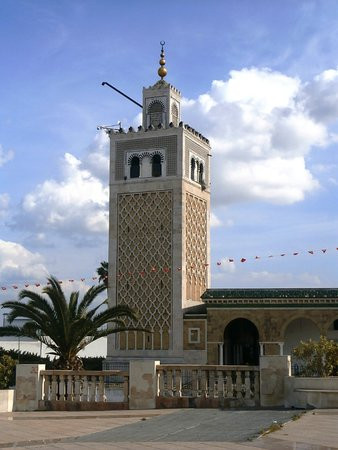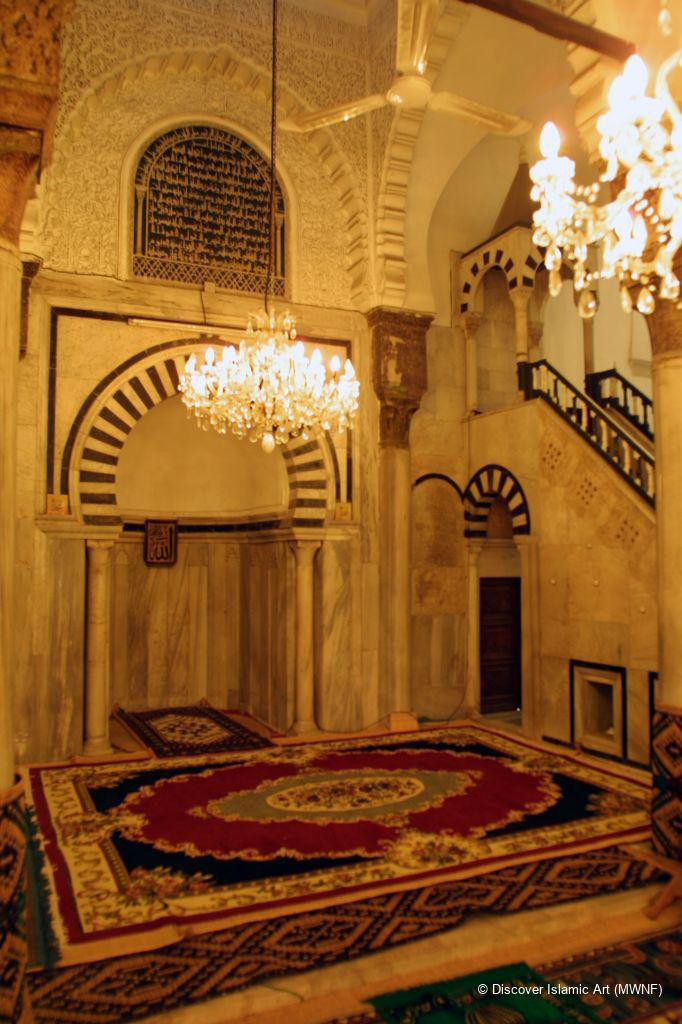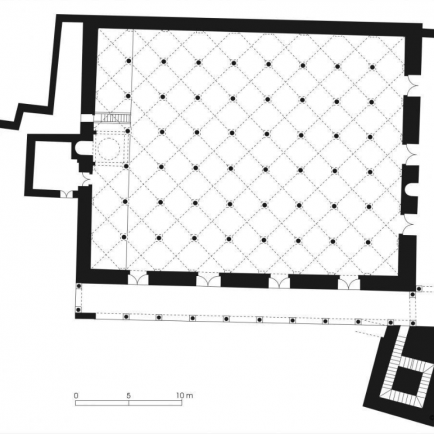Almohad Mosque of the Kasbah
History
After his declaration of independence from Marrakech's Almohads. the first Hafsid ruler, Abu Zakariya, had a palace built in the Kasbah (seat of government). Shortly after this, he built this mosque. Starting as a simple oratory, it went on to attain the status of a Friday mosque. So far, only the Zaytuna mosque has appreciated this role. With the arrival of the Turks he went over to the Hanefite rite practiced by the new masters of Ifriqiya.
Urban and Architectural
Built on a rectangular plan, the prayer hall is longer than wide, contrary to the usual model of Ifriqian mosques. It is divided into seven naves and nine bays and it is roofed with groined vaults separated by horseshoe arches supported on columns with Hafsid capitals and imposts in long parallelepipeds.
Its minaret has a lozenge design that pays tribute to Moroccan Almohad style and was hugely influential, serving as a model for the Zaytouna Mosque minaret. The call to prayer is signalled by a white flag on the exterior. Only Muslims may enter.
Description
The minaret, located at the northeast corner of the mosque, was built in 1233 before the construction of the mosque was completed. It is square in shape and constitutes the most remarkable element of the mosque; it adopts in its essential provisions as in its decoration the aspect of the minarets erected during the Almohad period in Morocco and Andalusia.
References
https://www.lonelyplanet.com/tunisia/tunis/attractions/kasbah-mosque/a/poi-sig/424509/355691
https://fr.wikipedia.org/wiki/Mosqu%C3%A9e_de_la_Kasbah
Details
Location
2 Road of 2 March 1934, Tunis 1000
Worshippers
400
Owners
The Tunisian Government
Year of Build
1235
Area
1100
Drawings
Map
History
After his declaration of independence from Marrakech's Almohads. the first Hafsid ruler, Abu Zakariya, had a palace built in the Kasbah (seat of government). Shortly after this, he built this mosque. Starting as a simple oratory, it went on to attain the status of a Friday mosque. So far, only the Zaytuna mosque has appreciated this role. With the arrival of the Turks he went over to the Hanefite rite practiced by the new masters of Ifriqiya.
Urban and Architectural
Built on a rectangular plan, the prayer hall is longer than wide, contrary to the usual model of Ifriqian mosques. It is divided into seven naves and nine bays and it is roofed with groined vaults separated by horseshoe arches supported on columns with Hafsid capitals and imposts in long parallelepipeds.
Its minaret has a lozenge design that pays tribute to Moroccan Almohad style and was hugely influential, serving as a model for the Zaytouna Mosque minaret. The call to prayer is signalled by a white flag on the exterior. Only Muslims may enter.
Description
The minaret, located at the northeast corner of the mosque, was built in 1233 before the construction of the mosque was completed. It is square in shape and constitutes the most remarkable element of the mosque; it adopts in its essential provisions as in its decoration the aspect of the minarets erected during the Almohad period in Morocco and Andalusia.


